Bresser Biolux NV 20-1280x microscope review
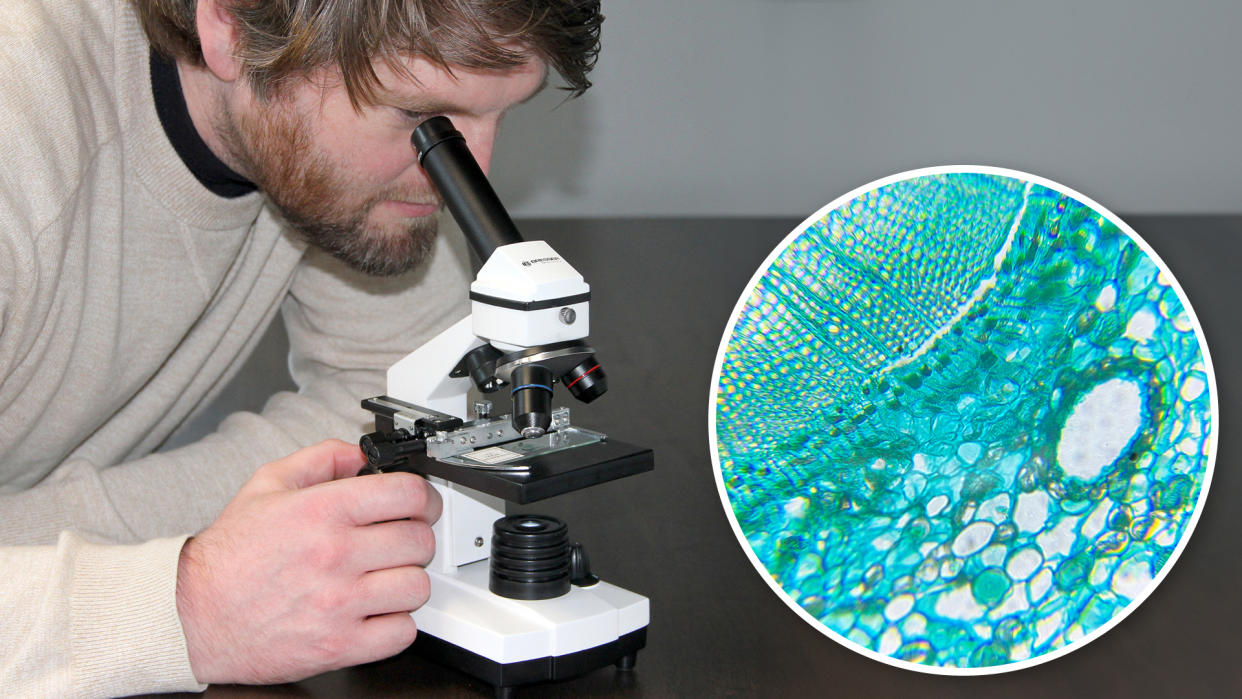
When I open a microscope box for the first time, I still get that spark of excitement I got as a child, knowing I was about to peek behind the curtain into a secret world. I have been fortunate enough to study and work in labs, where the quality of optics is never in question. But where the microscopic world was once limited to professionals and rich hobbyists, there are now plenty of cheaper models available, catering to the keen amateur. One such microscope is the Bresser Biolux NV 20-1280x.
Bresser is a German company that specializes in optics and sells a wide range of microscopes—the Biolux NV is part of their 'Student Microscope' range. Although they have a facility in Rhede for testing, construction, and evaluating products, this particular microscope began life in China.
The amateur market is already well served with some excellent microscopes, but few pack as much punch for the low price tag. Having a mechanical XY stage is a big plus, and the camera, while it has issues, is fun to play with and saves you from waving your phone's camera up against the eyepiece.
Features
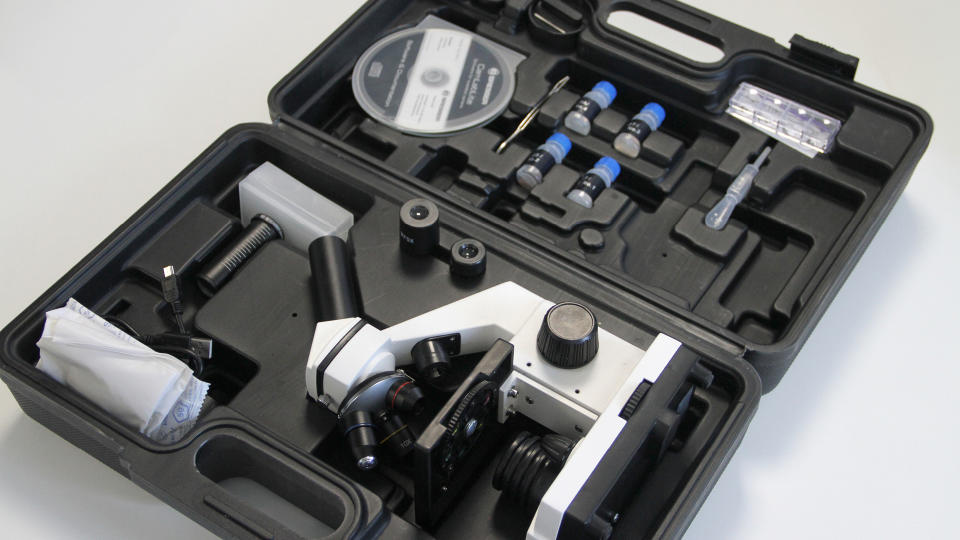
Microscope base and head
MicrOcular HD camera with metal housing, 1280x720 resolution
2 eyepieces: 5x WF an 16x WF
3 objective lenses: 4x, 10x, 40x
Barlow lens with 2x magnification
2x LED lights for transmitted and incident light
Batteries
Mechanical stage with XY control
Color filter disc
Prepared and blank slides
Dimmer
Tools: pipette and tweezers
Prawn breeding plant
Microcut
Specimens: Yeast, Gum media, Sea salt, prawn eggs
Dust cover and hard carry case
Specifications
Price
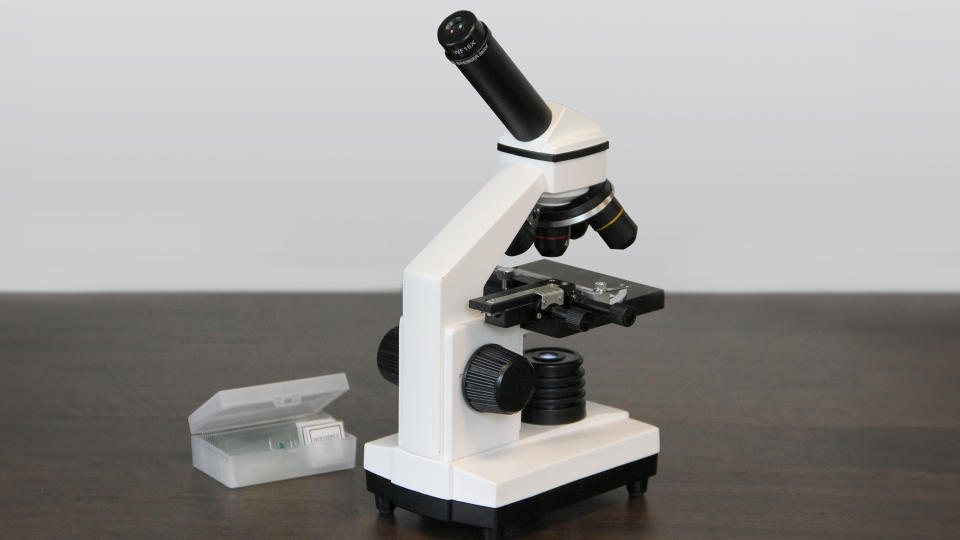
The Bresser Biolux NV can be picked up for around $200/£150. At this price you can’t really go wrong – there is little competition on the market at that price range. This microscope sits between basic beginner microscopes, such as the Celestron CM800 Compound Microscope and more accomplished, expensive devices such as the AmScope 40X-2500X Monocular LED Compound Microscope or the Swift microscope SW380T, which can be overkill for anyone just starting out. It stands out among budget microscopes by offering some of the features you would expect in lab-quality microscopes, while keeping to a low price.
Build and handling
The basic microscope setup does little in innovation, sticking to a tried and tested design. Putting it together was quick and intuitive, with the majority of parts being already installed and in place. It was a simple job to attach and tighten the adjustable mechanical plate to the stage, although the bar that keeps the slide in place was raised slightly off the surface of the body, meaning the slide sometimes slid off. The light source and objective lenses can be unscrewed, while other parts are held in by screws for which you may need a specialist allen key or screwdriver. The objectives do not adhere to the DIN standard, so it may be hard to replace or upgrade them down the line.

The body is primarily comprised of metal, with some plastic elements. For the most part these feel durable enough and allow for a lightweight design, making it easy to carry around. Sometimes a lighter microscope can suffer from stage drift, where the focus shifts when pressure is applied to the stage, but the only issue I noticed came at higher magnification when pressing down firmly on the stage.
Alignment of the stage is good, level with the nosepiece, so focus is even across the whole view. The eyepiece head can be manually adjusted 360 degrees for more comfortable viewing. Some microscope eyepieces have a rubber ring around the eyepiece, which serves to block out ambient light, protect the lens and keep the eye at an optimal distance, however these come flush to the edge.
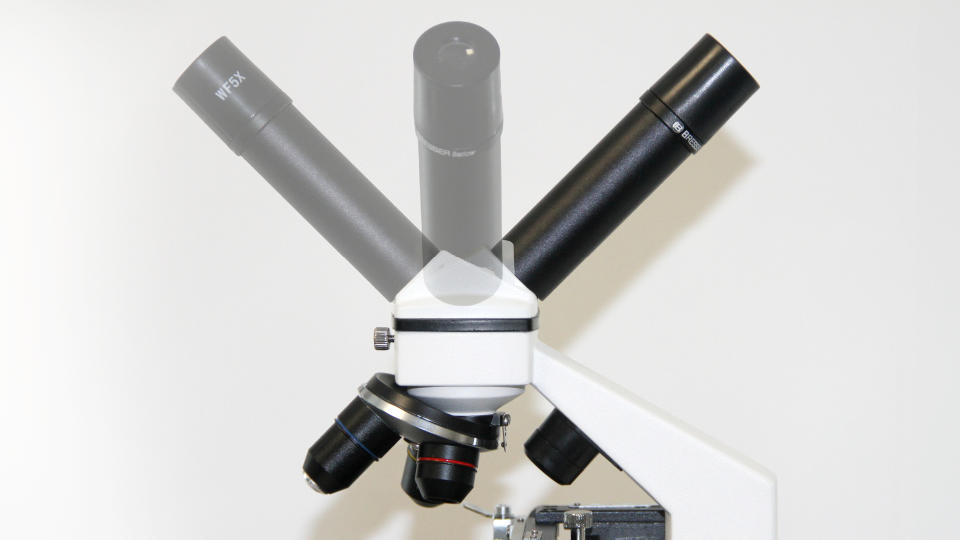
The kit comes in a sturdy black plastic box, which protects the parts and makes it portable. The two latches, while feeling a little cheap, do their job to keep it shut. Each half of the interior is filled with molded plastic, judged well to keep the parts tight and in place.
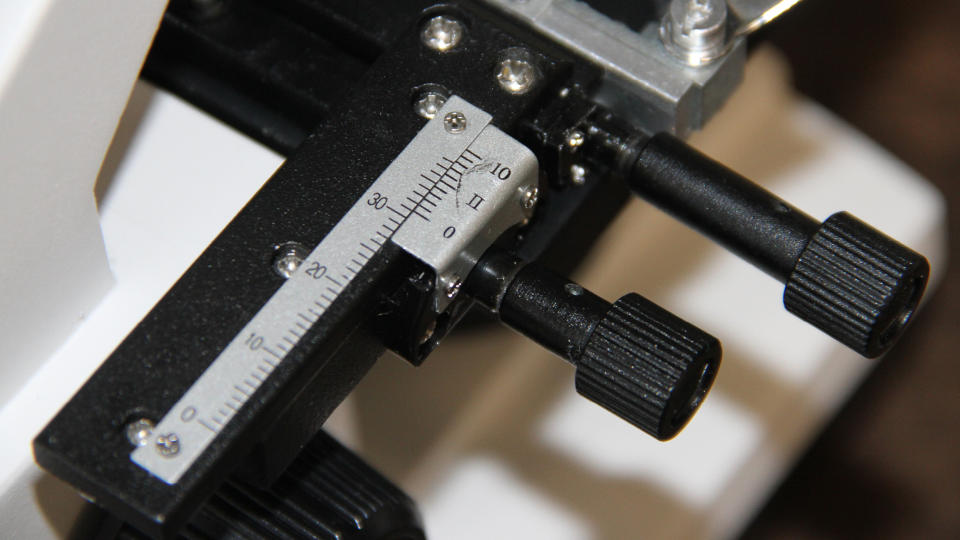
There are two light sources, reflected and transmitted LED, powered by AAA. Using LED instead of halogen provides an even clear light, although there was a slight blue tinge to these. They last longer than halogen, are more portable, reduce eye strain and prevent long lasting damage from the light getting too hot. There is an 8-step dimmer, letting you control the strength of the bulb, though this was not strong enough for some of the higher magnifications and camera mode. The 40X lens tends to obscure the reflected light source, so a workaround might be needed.

One of the big misses is a condenser – this microscope comes with a ring of color filters and diaphragm sizes. This is a nice addition for beginners, letting you pick out different stains in the image, however lacks the control needed for professionals. There is no filter holder either, so requires some modding for further experiments, such as dark field or oblique filter.
The additional accessories are all welcome, letting you go from opening the box to viewing samples within minutes (no disappointed kids on Christmas morning). There are five pre-prepared slides of reasonable quality and five blank ones with cover slides to make your own.
Performance
Above: Video sample shots with Bresser Biolux NV microscope's camera
The quality of objective lenses are generally sharp, becoming a little blurry at higher magnifications. They are achromat, meaning the centre is sharp, but you get a little aberration around the edges. Switching between them is smooth and they click into place comfortably. It should be noted that these lenses don't support immersion oil.

I found the parcentrality a little off when going between the 4X and the 10X, while the 10X to 40X was pretty much bang on. The parfocality was generally OK, there was a little refocussing between lenses.
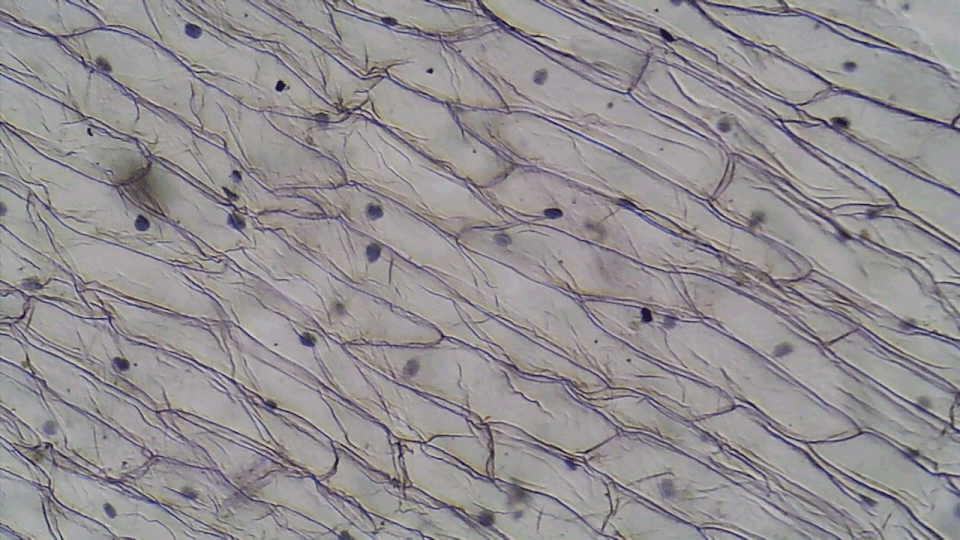
Where other microscopes might utilise coaxial focusing (fine and coarse focusing), this has one large dial. The focus system moves the stage up and down and is quite smooth with almost no wobble when stopping. A finer control would be useful at higher magnification, especially where there's a danger of contacting the slide with the lens, but for the most part, you don't miss it too much. The X+Y controls that move the stage around have a little give in them, meaning it is sometimes a little unresponsive to smaller movements.
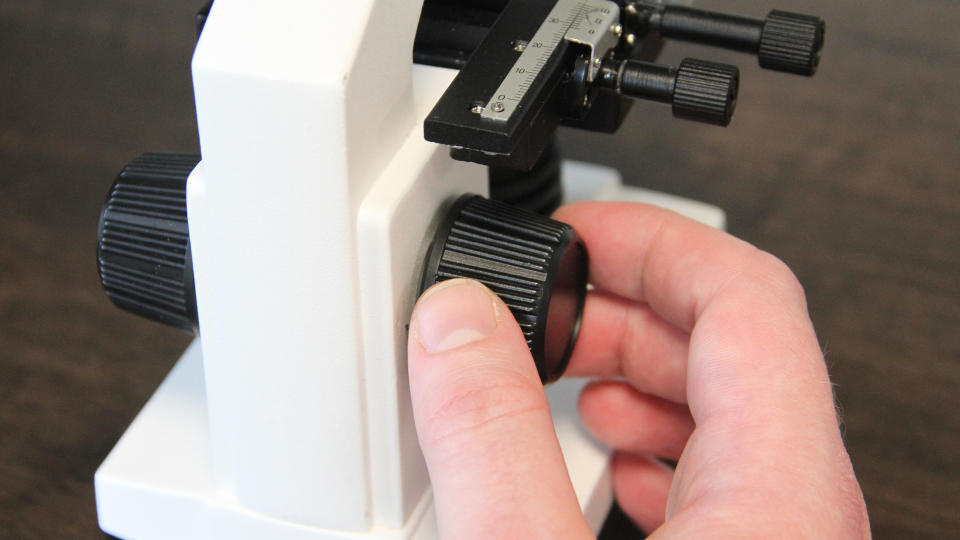
A unique feature of this microscope is the Barlow eyepiece, a retractable auxiliary lens inside the eyepiece tube, that lets you achieve up to 2x added magnification. This is a novel addition and a nice way to pack more magnification in easily, giving Bresser the 20x - 1280x boasted on the box. It would be nice if it could lock into place, rather than sliding up and down freely, but seems to stay in place so long as you don't shake it too much.

The filter ring is hard to use – it requires a lot of pressure to rotate, putting strain on the stage and meaning your sample is more likely to move around. There are no labels on any of the filters, so you’re basically left guessing what you're going to see on the next turn. The color filters had some effect in isolating particular stained objects, but the variable diaphragm options had little effect on contrast.
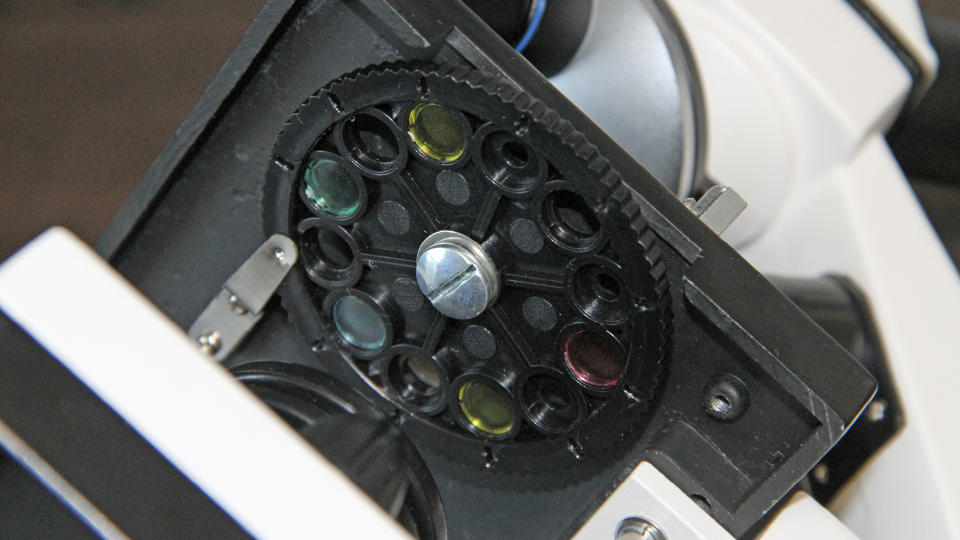
The camera is the one thing that lets this kit down. While it is a fun addition, allowing you to take pictures and video of the microscopic world, the quality is not in the same league as the rest of the kit. It is a cropped sensor so the image is more magnified from the view in the eyepiece. The images suffer for chromatic aberration and it is hard to get the necessary light from the LEDs to expose at the higher magnifications. On the plus side, the camera shares the same mount as telescopes, so could be used across multiple devices.
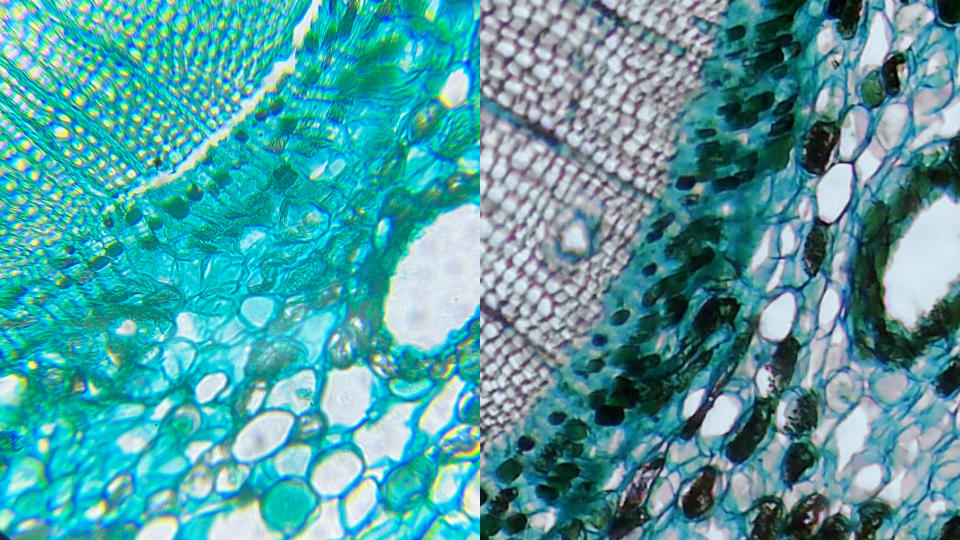
The accompanying software comes on a CD and can also be downloaded for Windows or Mac. It uses a USB connection, so I needed to use a dock converter to connect to USB-C, which lost connection at the slightest knock. It's great to have a live view on screen, meaning you no longer have to strain your eyes or suffer backache from leaning over the eyepiece.
The app was not the easiest to use, with basic color adjustments that were hard to use and what seemed to be an automatic color balance, rendering the colored filters in the ring obsolete. There are some genuinely useful tools that let you measure the size of objects on the screen and the distance between them, which will come in useful for school and personal projects.
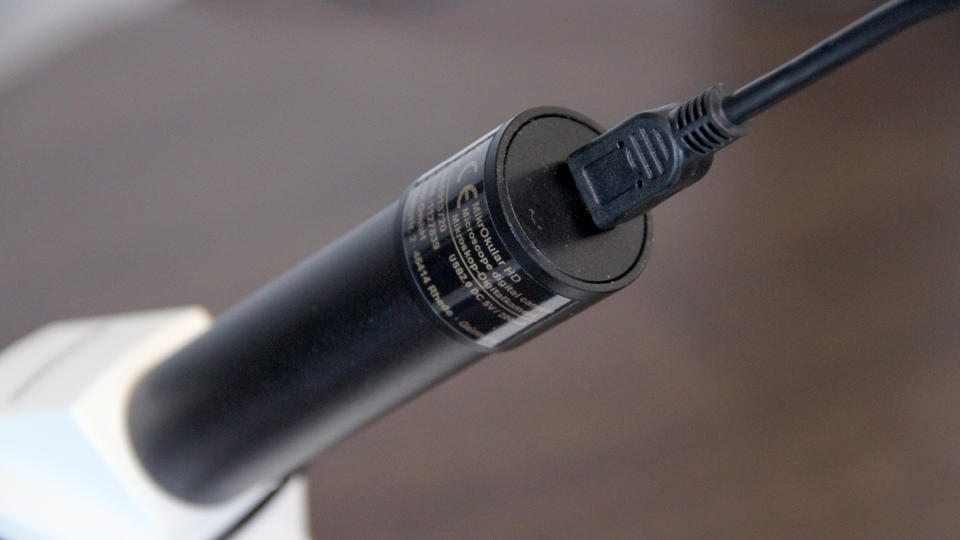
Verdict
It has been great fun playing around with this microscope, which is part of a terrific kit. The main body and lenses are worth the price alone, but the added extras are all welcome. Although I have criticized the camera, the fact that there is a camera included at all should be celebrated, and I hope there will be plenty of budding scientists proudly showing their images off to friends and family.
✅ Buy this if...
You don't want to spend too much for a decent microscope.
If you want to experiment with photography and video, but aren't too concerned with producing pin sharp images.
🚫 Don't buy this if...
You're purchasing for a professional lab or college.
You're buying for a younger child as there are some fiddly parts.

